Embarking on the Manaslu Circuit Trek is a journey into Nepal's secluded heart, an adventure offering stunning Himalayan vistas, including the mighty Manaslu, and the epic challenge of the Larkya La Pass (5,106m). This trek is frequently praised as the "new Annapurna Circuit," but planning your budget requires a unique approach.
Crucial Permit & Legal Requirement for Manaslu Circuit Trek Cost
One of the most significant cost and planning factors for the Manaslu Circuit Trek is the Restricted Area Permit (RAP) — a mandatory government regulation designed to protect the region’s delicate ecosystem and preserve local culture. Here are some of the Legal and crucial reguirement for your Manaslu Circuit Trek.
- Operator Requirement
The Manaslu Restricted Area Permit cannot be obtained individually. It must be issued through a government-registered Nepali trekking company, such as Escape Himalaya. This rule ensures that all trekking activities are properly documented, supporting local governance and environmental conservation efforts. The registered operator handles all formalities, including paperwork, identity verification, and route authorization. - Licensed Guide Mandate
The Government of Nepal requires every trekker in restricted zones to be accompanied by a licensed, government-certified Nepali guide. This regulation enhances safety, ensures proper communication with local authorities, and supports ethical tourism by employing certified professionals. Your guide not only navigates the trail but also assists with check-post formalities and cultural interpretation. - No Independent Permits
Unlike other trekking routes, independent trekkers cannot obtain the Manaslu RAP. Similarly, freelance or unregistered guides are not authorized to process permits. This rule helps maintain accountability and ensures that only registered agencies conduct operations in the restricted area. Attempting to trek without proper authorization can lead to legal penalties and immediate removal from the region.

Breakdown of Permit for Manaslu Circuit Trek Cost
Here is the complete breakdown for the cost required for Manaslu Circuit trek:
| Permit Name | Trekking Season | Cost (USD) | Notes |
|---|---|---|---|
| Manaslu Restricted Area Permit (MRAP) | Sep – Nov (Peak Season) | $100 for the first 7 days + $15 per additional day |
Mandatory. Must be arranged through a registered local trekking agency with a minimum of two trekkers and a guide. |
| Dec – Aug (Off-Season) | $75 for the first 7 days + $10 per additional day |
||
| Manaslu Conservation Area Permit (MCAP) | All Year | $30 | Mandatory. Fixed cost regardless of duration. |
| Annapurna Conservation Area Permit (ACAP) | All Year | $30 | Mandatory, as the trek exits through the Annapurna region. Fixed cost regardless of duration. |
| Chumnubri Rural Municipality Fee | All Year | ~$8 to $15 | Newer local fee. Cost varies between sources; sometimes listed separately. |
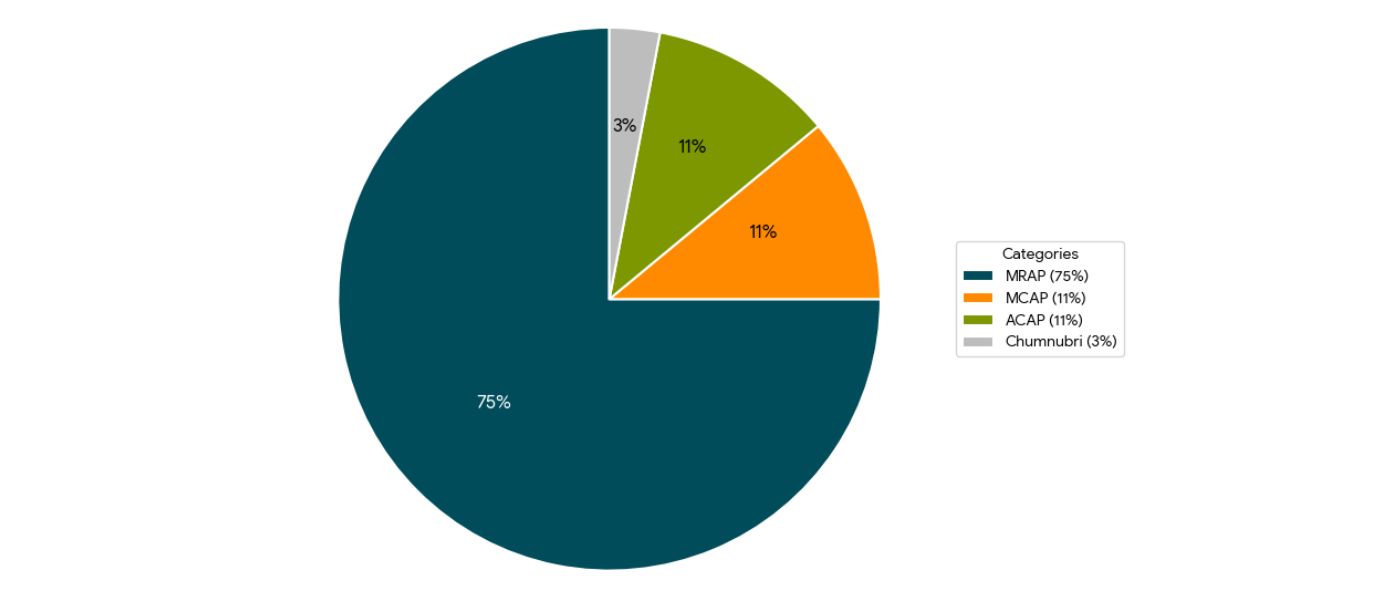
You can delve deep onto the permits required for Manaslu Circuit trek in the folllowing blog - Manaslu Trek Permits 2025/26
The Manaslu Circuit Trek requires three mandatory permits for all trekkers, with a distinct fee structure for Indian and other SAARC country nationals (Afghanistan, Bangladesh, Bhutan, Maldives, Pakistan, Sri Lanka), who generally benefit from a reduced fee for two of the permits. The most critical requirement is the Manaslu Restricted Area Permit (MRAP), which is essential because the route borders Tibet; it must be obtained through a registered Nepali trekking agency and requires a minimum of two trekkers accompanied by a licensed guide, prohibiting solo trekking. Unlike other permit types, the MRAP fee is the same for SAARC nationals as for other foreigners and varies by season: costing $100 USD for the first seven days during the peak season (September to November) and $75 USD during the off-peak season (December to August), with an additional daily fee thereafter.
Inclusions: What Escape Himalaya's Manaslu Circuit Trek Package Covers
The package cost covers the mandatory, non-negotiable, and logistically complex components of the trip.
Mandatory Permits and Fees
- All required governmental permits are handled and paid for by Escape Himalaya.
- Special Manaslu Restricted Area Permit (RAP): The main permit that enforces the guide/agency rule.
- Manaslu Conservation Area Project (MCAP) Fee: Required to enter the conservation area (checked at Jagat village).
- Annapurna Conservation Area Project (ACAP) Fee: Required as the trek passes through the Annapurna region (checked near Dharapani).
- All necessary government taxes and service charges.
Meals and Accommodation (Full Board)
- The package provides a full-board experience during the trek.
- Kathmandu Stay: Two nights' accommodation with breakfast at a 3-star category hotel in Kathmandu.
- Trek Accommodation: Best available lodge-to-lodge (teahouse) accommodation on a twin-sharing basis throughout the trek.
- Note: Facilities are basic in higher villages like Samagaun and Dharmashala.
- Trek Meals: Full board meals (Breakfast, Lunch, and Dinner) with standard tea/coffee included during the trek.
Staff, Safety, and Equipment
- Essential human resources and safety gear are provided.
- Guide: One experienced, licensed, and government-certified Nepalese trekking guide.
- Porters: Porters to carry luggage (generally 1 porter for every two trekkers), including their salary, insurance, food, and equipment.
- Safety Gear: Comprehensive first-aid medical kit.
- Provided Gear: Escape Himalaya Duffle Bag, Down Jacket, and Sleeping Bag (must be returned after the trip).
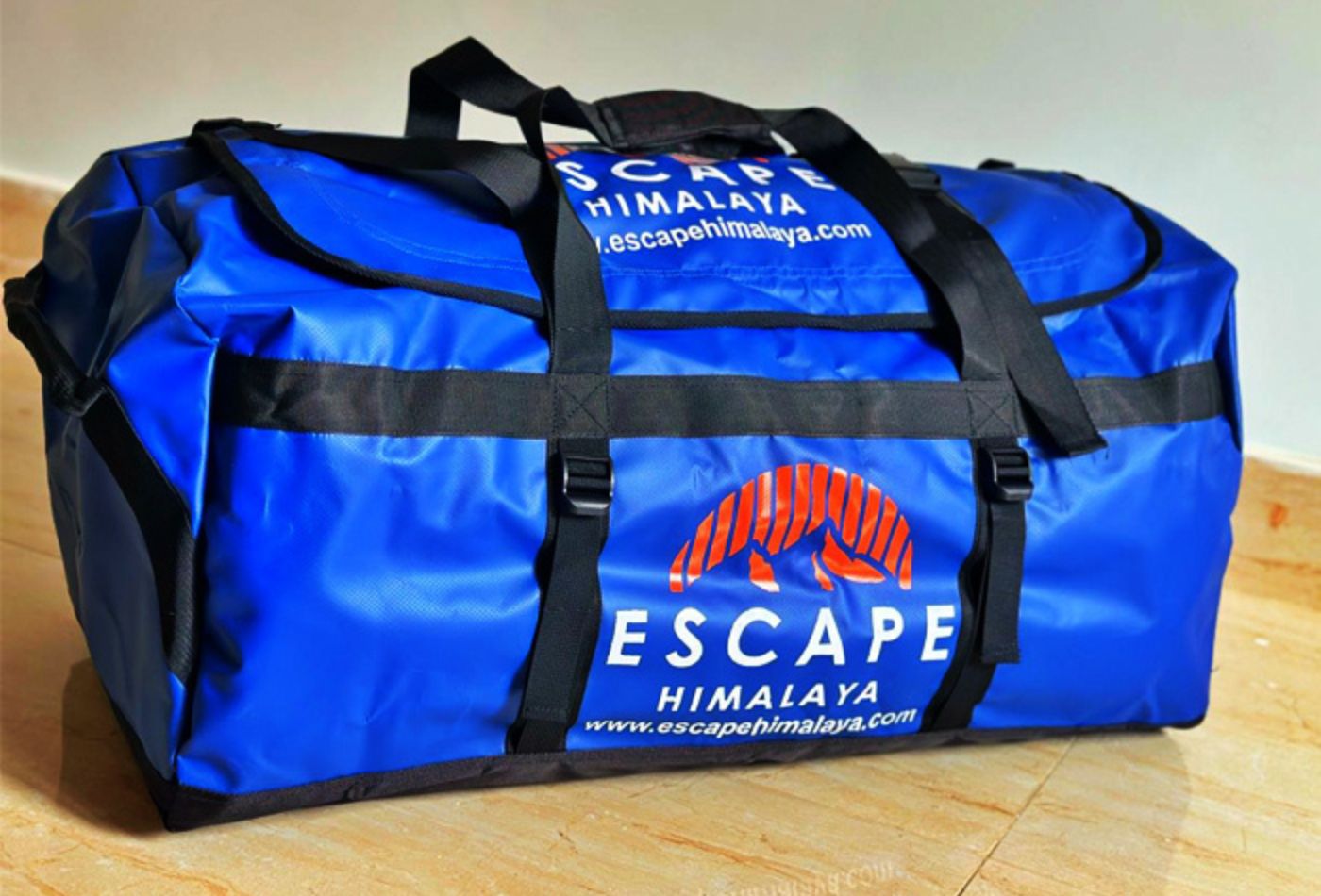
Transportation and Logistics
- All ground transfers are managed by the operator.
- Airport Transfers: All airport (Tribhuvan International Airport, Kathmandu) pick-up and drop-off services by private vehicle.
- Trek Transportation: Surface transfer from Kathmandu to the official trailhead, Machha Khola, and the return jeep/bus drive from the trek's end point, Dharapani/Chamje, back to Kathmandu.
| Route Segment | Mode of Transport | Approx. Cost (USD) | Approx. Cost (NPR) | Remarks |
|---|---|---|---|---|
| Kathmandu → Soti Khola / Maccha Khola | Local Bus | $25 – $30 | NPR 3,300 – 4,000 | Budget option; ~8–9 hrs drive. Bumpy road conditions. |
| Kathmandu → Soti Khola / Maccha Khola | Shared Jeep | $40 – $50 | NPR 5,300 – 6,600 | Comfortable shared 4×4; faster and smoother than local bus. |
| Kathmandu → Soti Khola / Maccha Khola | Private Jeep | $150 – $200 (per vehicle) | NPR 19,800 – 26,400 | Ideal for small groups; seats up to 6 people comfortably. |
| Dharapani / Besisahar → Kathmandu | Local Bus | $25 – $30 | NPR 3,300 – 4,000 | Standard return route; long day drive (~9 hrs). |
| Dharapani / Besisahar → Kathmandu | Private Jeep | $150 – $180 (per vehicle) | NPR 19,800 – 23,700 | Flexible schedule; smoother, faster, ideal for groups. |
| Emergency / Optional | Helicopter (One-way) | $350 – $500 per person | NPR 46,200 – 66,000 | Emergency evacuation or luxury exit; weather-dependent. |
| Average Estimated Total (Standard Bus Both Ways) | ≈ $55 – $60 | ≈ NPR 7,200 – 8,000 | Budget for flexibility in case of route or weather changes. | |
Here at Escape Himalaya, there are two main transporational logistics included in the package, Kathmandu to Maccha Khola and Dharapani to Besisahar, both the transporation is conducted via local and private jeep. Yet, we can make modifications if u want.
Exclusions: Additional Out-of-Pocket Expenses
These are the costs not included in the Escape Himalaya package that you must budget for separately.
Personal & Administrative Costs
| Item | Estimated Cost | Details |
|---|---|---|
| International Airfare | Varies | Flights to and from Kathmandu. |
| Nepal Entry Visa Fee | $50 (30 days) | Payable upon arrival at Kathmandu’s Tribhuvan International Airport (TIA). |
| Travel Insurance | $100 – $200 | Mandatory coverage for high-altitude trekking and emergency evacuation up to 5,160 m (Larkya La Pass). |
| Tips & Gratuities | $100 – $150 | Customary for trekking staff — guides and porters — based on service quality and group size. |
Trekking Expenses (Teahouse Incidentals)
These are variable daily expenses paid directly to teahouse owners during the trek.
| Item | Estimated Daily Cost (Approx.) | Details |
|---|---|---|
| Bottled Water / Drinks | $1 – $4 per item | Includes bottled water, soda, juice, or alcohol. Using a purifier saves cost and reduces waste. |
| Extra Snacks / Bars | $5 – $10 per day | Covers chocolate, desserts, or energy bars beyond full-board meals. |
| Hot Showers | $2 – $4 per shower | Available in most teahouses but often charged extra, especially in Samdo or Dharmashala. |
| Device Charging | $1 – $3 per hour | Common in higher villages where solar power is used; costs increase with altitude. |
| Wi-Fi / Internet | $3 – $5 per 24 hours | Available in mid-altitude areas via Ncell or Everest-Link cards (Namrung, Jagat, etc.). |
| Other Meals | Varies | Covers any meals in Kathmandu other than the two included breakfasts. |
The Non-Financial Cost: Safety and Altitude Acclimatization
You rightly list insurance as an exclusion, but a dedicated safety section reinforces the importance of the package's structured itinerary and the critical role of altitude preparedness.
The greatest risk on the Manaslu Circuit is Acute Mountain Sickness (AMS), especially when crossing the Larkya La Pass. Your package is designed to mitigate this risk, but personal preparation is mandatory.
- Mandatory Evacuation Coverage: Your travel insurance is non-negotiable and must explicitly cover emergency medical treatment and high-altitude helicopter rescue up to at least 5500 meters. A helicopter evacuation can cost upwards of 5,000$ to 10,000$ USD.
- Acclimatization is Key: The cost of the package includes essential acclimatization time (often in Samagaun). Utilize this time for rest or slow, short hikes to a higher elevation followed by sleeping lower, a crucial strategy against AMS.
- Guide as a Safety Net: Your licensed guide is trained in high-altitude first aid and is your primary authority on the trail. Their daily assessment of your health is a mandatory safety measure built into the structure of this restricted trek.
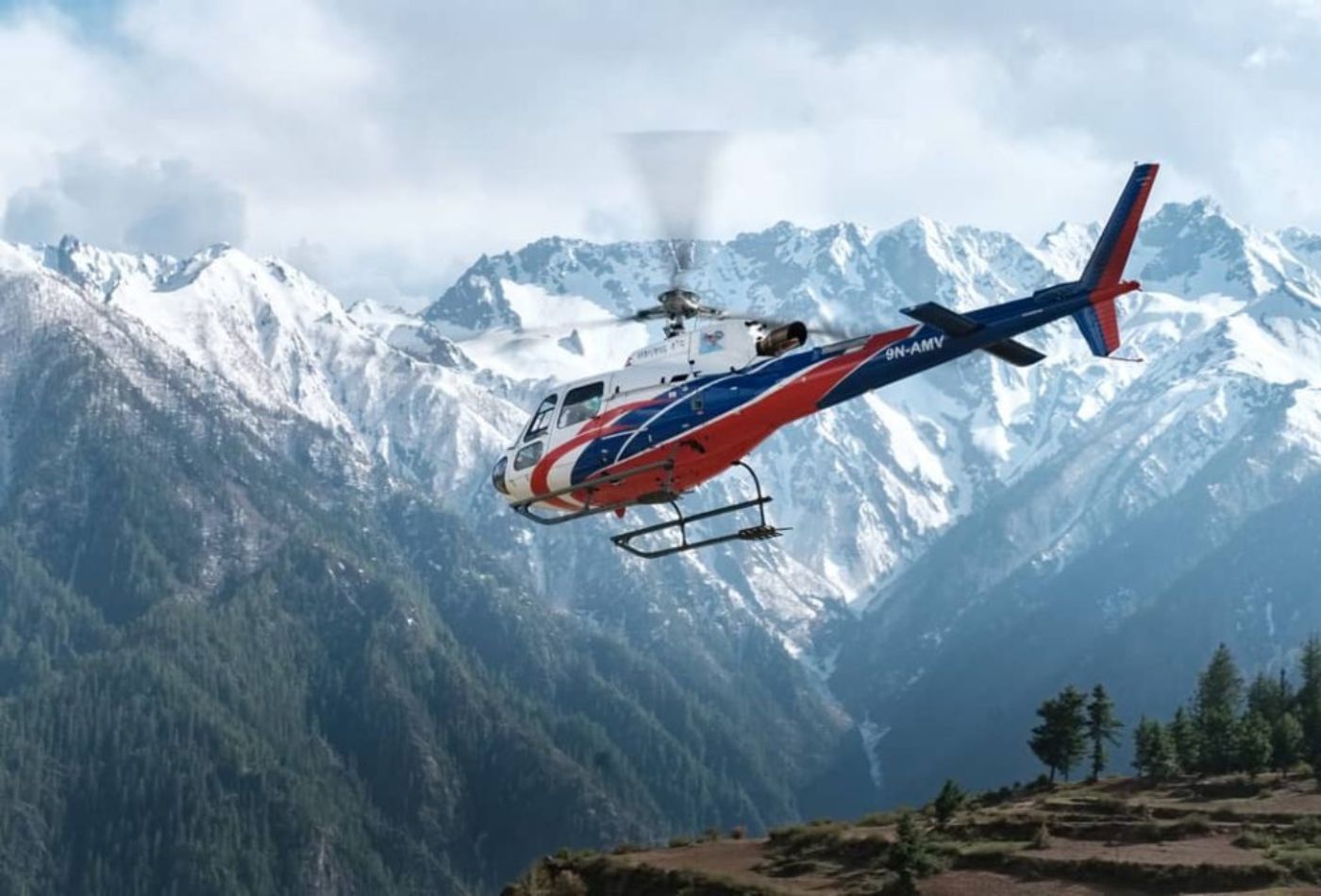
Cultural & Environmental Expectations During Manaslu Trek
This enhances the "experience" aspect mentioned in the introduction and helps trekkers understand the etiquette in the remote, culturally rich region.
The Manaslu Circuit passes through a deep Tibetan-Buddhist region (Nupri and Tsum Valley). Showing cultural and environmental sensitivity is vital for a respectful and rewarding journey.
- Teahouse Etiquette: The price for a room is often kept low with the expectation that trekkers purchase their meals (full-board packages satisfy this). Do not stay at one teahouse and eat at another.
- Respecting Sacred Sites: Always walk clockwise (sun-wise) around Mani walls, stupas, and monasteries. Never climb on these structures or pick up rocks from them.
- Environmental Responsibility: Help reduce the cost and waste of plastic bottles by using water purification tablets, drops, or a filter. Many teahouses offer safe, boiled water refills at a lower cost than bottled water.
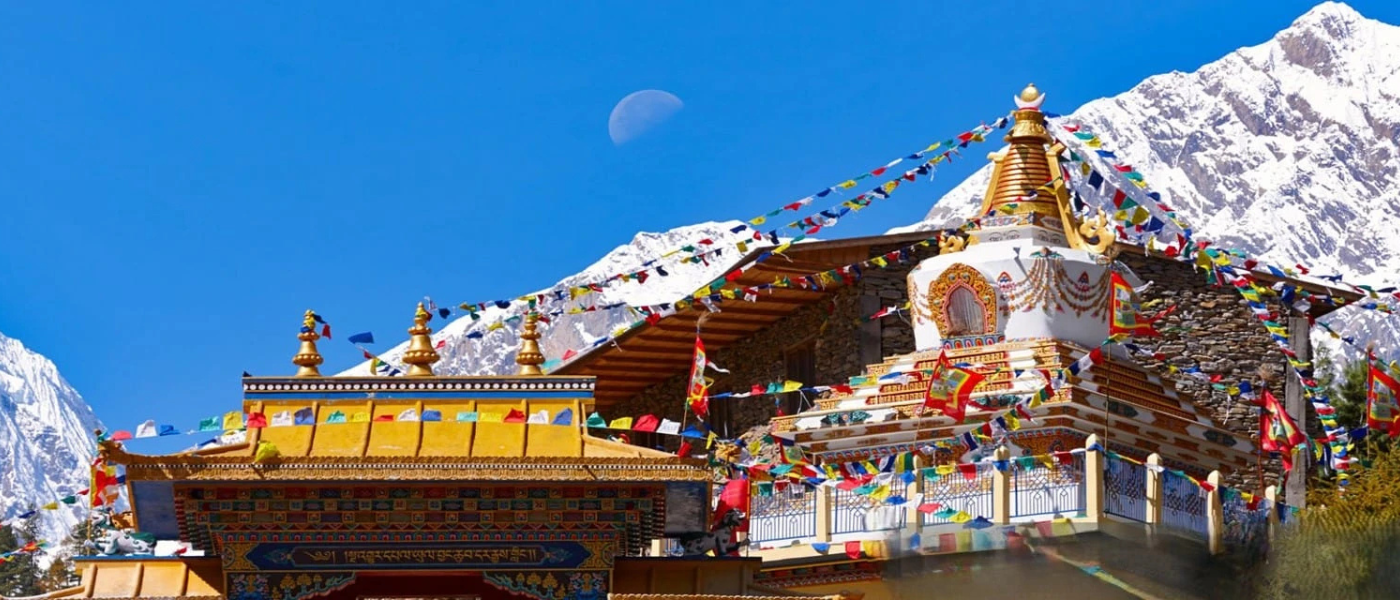
Currency and Cash Management in Manaslu Circuit Trek
Unlike city travel, the Manaslu Circuit is a completely cash-based economy once you leave the trailhead. You will need to carry enough Nepali Rupees (NPR) to cover all of your 'Exclusions' (snacks, drinks, charging, tips, etc.) for the entire 14-day duration.
- No ATMs: There are absolutely no ATM facilities past Arughat/Soti Khola. You must withdraw sufficient NPR in Kathmandu before starting the drive.
- The Power of NPR: While most major expenses (permits, guides, transportation) are often quoted and paid for in advance in USD, your daily on-trek expenses must be paid in local Nepali Rupees. Exchange USD at a reliable money changer in Kathmandu.
- Calculating Your Cash: Based on the exclusions section, budget for $15 – $25 USD per person, per day for miscellaneous expenses on the trail, plus the final tipping amount. For a 14-day trek, this suggests carrying an extra $360 – $500 (or equivalent NPR) in cash for safety and comfort.
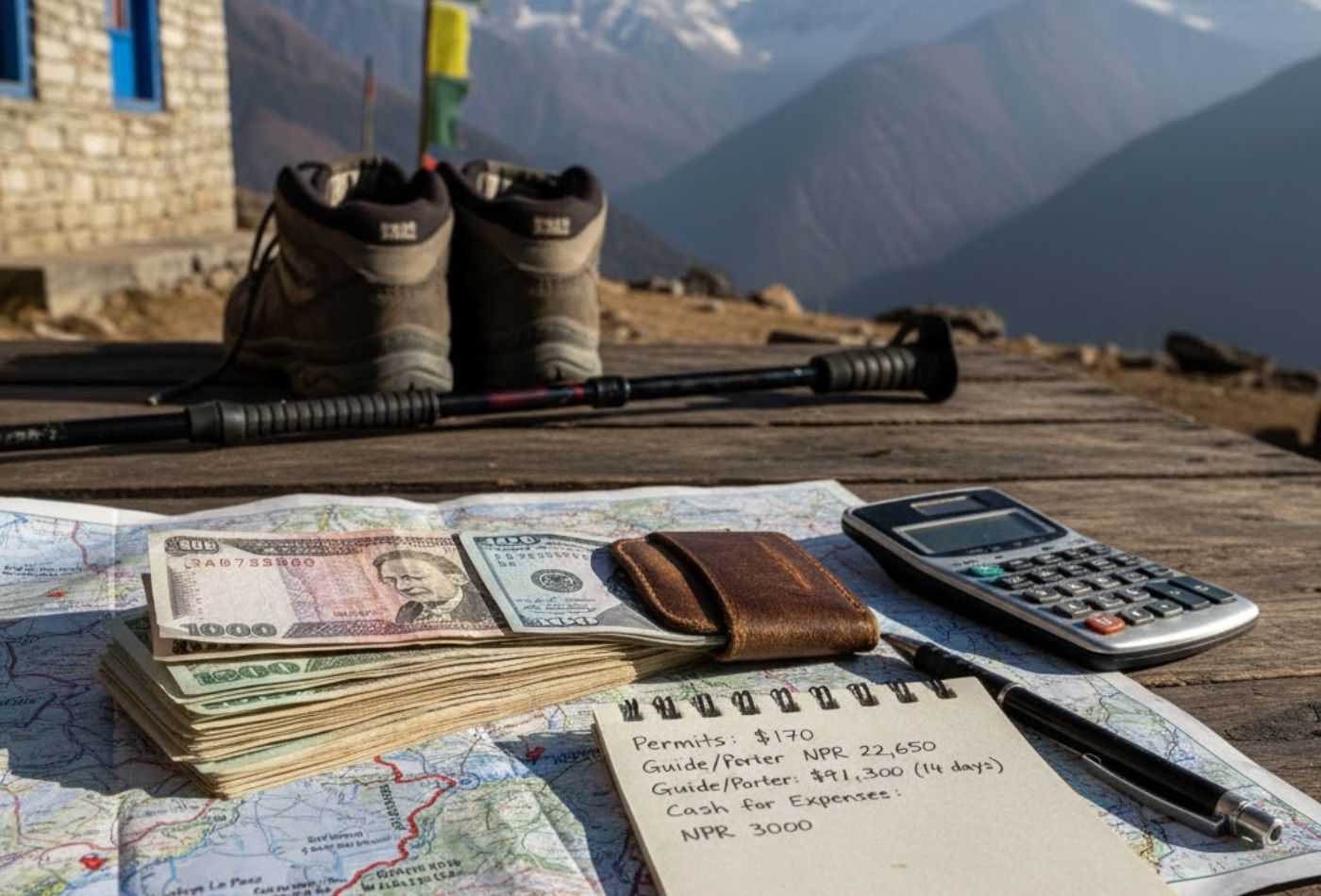
Compulsion of Travel Agencies for Manaslu Circuit Trek
Because the Manaslu region is a Restricted Area, it is legally mandated that you travel with a licensed Nepali operator. This essential rule means your cost breakdown centers around a comprehensive package.
This guide, focused on the highly-rated Escape Himalaya 14-Day Manaslu Circuit Trek, provides the complete, specific financial blueprint, covering everything from the mandatory government permits that independent trekkers cannot acquire, to the daily expenses in villages like Jagat and Samagaun, ensuring you are fully prepared for this unforgettable expedition.
It is the best practice to choose the travel agencies which include the full-board meals in the itinerary which makes the trek convenient.
Why Escape with Escape Himalaya?
Choosing Escape Himalaya means opting for a secure, transparent, and authentic journey on the secluded Manaslu Circuit. Unlike the crowded Everest and Annapurna routes, Manaslu offers unspoiled serenity and deep cultural immersion in remote Tibetan-Buddhist villages. We provide a high-value, all-inclusive package that handles all complexities: securing the mandatory Restricted Area Permits (MRAP, MCAP, ACAP), providing safe private transportation, and ensuring you are accompanied by highly experienced, local guides and porters. Our 14-day itinerary is expertly designed for maximum safety, featuring crucial acclimatization time before the challenging Larkya La Pass 5,106 m crossing. By managing all logistics, utilizing local expertise, and offering tiered group pricing that delivers superior value, Escape Himalaya ensures your focus remains entirely on experiencing the majestic solitude of Mount Manaslu without the burden of permits, risk, or logistical stress.
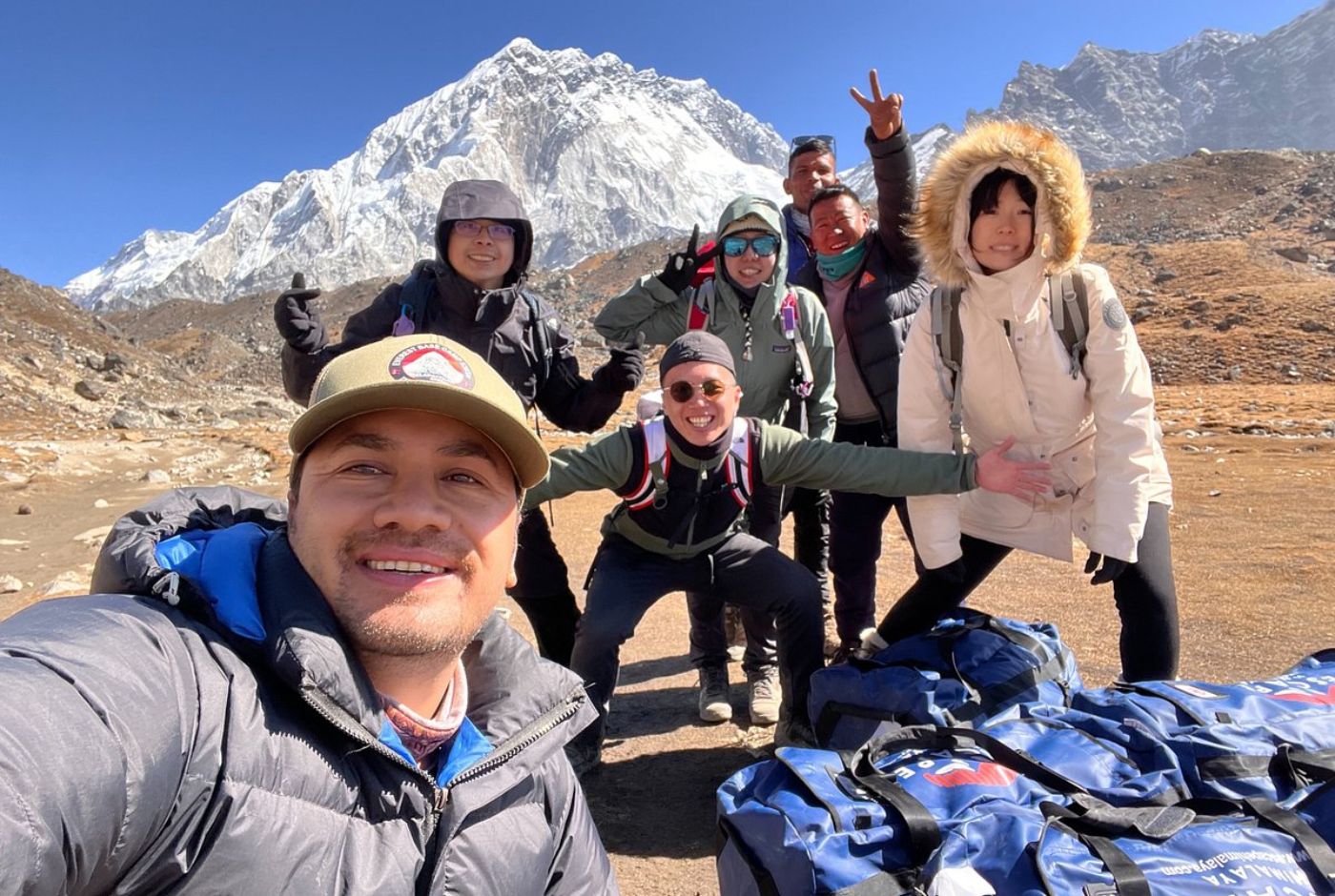
Concluding Notes: Manaslu Circuit Trek Cost
Ultimately, the Manaslu Circuit Trek cost is a highly personal variable, ranging roughly from $1,200 to $2,500 for a standard 14-17 day journey, depending on your choices in package, comfort, and spending habits.
The key mandatory expenses: permits, guide, and a minimum of two trekkers form the non-negotiable foundation of your budget. Beyond that, your final cost is a reflection of your travel style. While a stricter budget is achievable by embracing local buses, sharing a porter, and sticking to Dal Bhat, a more flexible budget will afford you the small comforts like hot showers and reliable charging, which are priceless after a long day of trekking.
The cost is an investment not just in a trek, but in a raw, culturally rich, and visually stunning Himalayan experience. With this detailed breakdown, you now have the tools to plan a safe, responsible, and perfectly budgeted adventure on this legendary, off-the-beaten-path trail.






